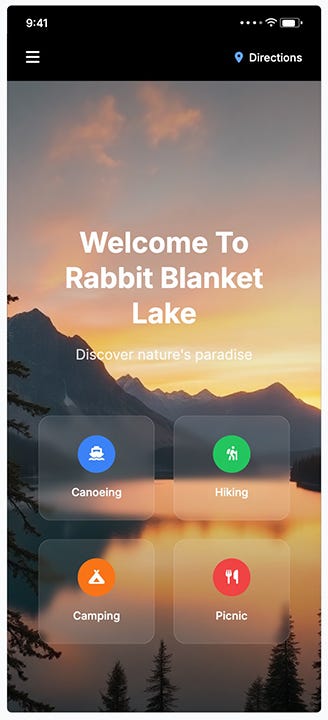AI’s Aversion To Risk
AI’s aversion to risk
Do AI UX Design tools play it safe?
https://medium.com/media/a7ac2cdd534264e8b9f8e3df2240af5c/href
A couple of weeks ago, I came across a LinkedIn post by Eric Edwards that marvelled at the sheer brilliance of the Open Spaces Burberry ad. He concluded the post by writing:
“But if it came out today, a lot of people would assume it is AI. No questions asked. And that’s the unfortunate part, not that AI exists, but that our instinct to be amazed by human craft is fading. Feels like we are losing the thrill of the impossible a little bit. Oh well. Price of progress?”
I couldn’t agree more with that observation and have to ask: “Are we, as UX Designers and creatives, willing to pay that price?”
We are beginning to see the emergence of UX Design Tools such as UX Pilot and Google’s Stitch, When you look at the impressive capabilities of these applications on their Home Pages, you tend to have one of two reactions: “That’s amazing” or “Seen it. Done it. Been there.” Checking out the reviews reveals many of the usual “Rah Rah” posts or “Rubbish” posts. What you don’t see are examples of how these tools can truly “push the envelope.” The results often seem like they are based on templates because AI tends to avoid risk in its attempt to be “creative”. As I have said for years, when it comes to motion design, descriptions don’t work because: “You can’t describe it. You have to show it.” Reducing creativity to just a written prompt is about as effective as King Canute telling the tides to stop on the seashore.
Here’s an example.

One of the common UI examples used in my LinkedIn Learning courses is this iPhone screen for the Rabbit Blanket Lake Provincial Park on the north shore of Ontario’s Lake Superior. The image is one of my photos, and the icons along the bottom were drawn in Adobe Illustrator and assembled in Figma, though it first appeared in the now-defunct Adobe XD. I wanted to see how Stitch and UX Pilot would perform when asked to create this screen.
Just to be fair both applications were given the same prompt:
“Design an iPhone 16 Pro home screen for the Rabbit Blanket Lake Campground. The UI background is black. Include four icons for Canoeing, Hiking, Camping and Picnic at the bottom. To include a full-screen image of the lake with the text “Welcome To Rabbit Blanket Lake”. Include iOS system icons at the top and a Hamburger menu and directions text in the iOS App bar area.”
Here are the results:


Stitch was a complete disaster. Where are the iOS system icons? Where is the Directions text? Did it not understand the term “Full Screen”? How does a ship represent a canoe?
UX Pilot was a bit better, but the ship icon appears again. The icons are not at the bottom, and the backgrounds, which I didn’t request, are much larger than they should be. I also didn’t ask for that second line of text, and placing it over the image causes it to lose that all-important contrast. I should also mention that Stitch actually understood my intent — without prompting — regarding the placement of the icons at the bottom and how they should be handled.
Video fares no better. I wanted to see if generated video could capture the essence of that Burberry ad. I sent the same prompt to Google’s Veo 2 and Adobe’s Firefly to see how they would approach the concept of flight captured in the Burberry ad. The prompt was:
“Four young men in their 20s wearing loose shirts and jeans stand in a golden wheat field under a bright sky. Suddenly, a powerful gust of wind lifts them into the air, their arms flailing as they fly over the swaying wheat. The field ripples like waves beneath them as they are carried by the wind, surprised and laughing as they experience the joy of flight.”
https://medium.com/media/e42eb4ba552409395a907d7f4da86484/hrefhttps://medium.com/media/e51b49ea74c55c4e929d46e7b7efe289/href
Obviously, the Firefly and Veo videos didn’t quite understand the concept of “four.” Firefly had the men running through the field — no flight. Veo showed the men jumping, not being picked up by the wind. Neither captured the idea that the men should be flying over the wheat.
The UX Pilot and Veo results are what I would call “marginally acceptable”.
Even so, I have to ask: have our standards dropped so much that results considered amazing might not actually be amazing? I agree with Eric that “our instinct to be amazed by human craft is fading.”
What is often overlooked in all the hype around AI is that the models are trained on what has already been created, not what could be created. So, there’s an aversion to risk. Because the fields of Web and UX design have developed best practices that suit the limitations of a screen-based medium, we tend to forget that the promise of AI is that we can create ideas nobody else has seen. That is the real risk. Maybe we should treat web and mobile as mediums, not screens. Yugo Nakamura, writing in the New Masters of Flash published in 2000 by friendsofED, foretold the issue of AI Design and its aversion to risk when he wrote:
“The web, itself, is an extremely technically restrictive medium. However, I would guess that none of the web designers whom I respect ever regard this as a restriction on their freedom to derive huge enjoyment from working out and around the rules of the game.”
Further learning:
Designers: We’ll all be design engineers in a year.
The hidden cost of AI convenience: Our ability to think.
User behaviours, product design architecture, and the impact of AI
AI’s Aversion To Risk was originally published in UX Collective on Medium, where people are continuing the conversation by highlighting and responding to this story.
This post first appeared on Read More

